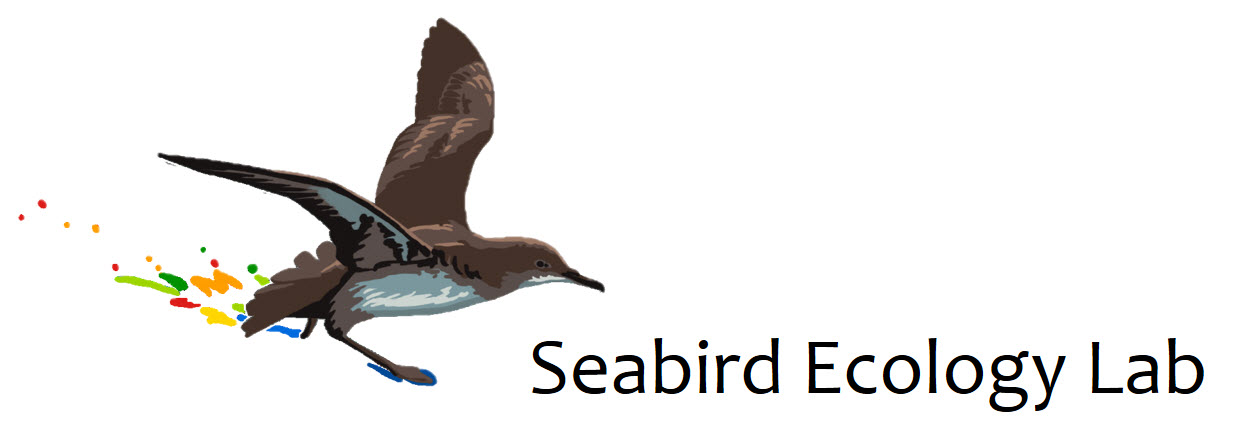(202) Bird-borne radar detectors unveil fishery interactions with shearwaters and uncover IUU fishing activity. Conservation Biology. In press.
Navarro-Herrero L, S.Saldanha, T.Militão, D.Vicente-Sastre, D.March, J.González-Solís. (2024)



Biography
I am full professor at the University of Barcelona (UB) and a researcher in the fields of evolutionary, population and environmental biology. I developed my PhD in a team led by Profs. Xavier Ruiz and Lluís Jover, on the interactions between two gull species. In 1996 I moved to a team led by Peter Becker in Wilhelmshaven (Germany) to investigate pairing systems. Then, in 1999, I moved to a team led by John P. Croxall at the British Antarctic Survey (UK) to investigate the movements and sexual segregation of seabirds using PTTs and GLSs devices. In 2000, I joined the UB as a “Ramón y Cajal” researcher. Since then I have formed my own team, mainly focused on seabird movement ecology. In 2008 I became professor at the Departament de Biología Evolutiva, Ecologia i Ciències Ambientals as well as the Institut de Recerca de la Biodiversitat (IRBio). In 2018, I became a full professor. In the last decade I have been leading a team of 2-4 postdocs, 5-10 PhD students and a large number of MSc and undergrad students.
Research interests
My research aims to understand the key processes driving the spatial and temporal dynamics of animal populations, with a particular emphasis on the role of animal movement and the anthropogenic drivers. I study the behaviour, migration patterns, foraging ecology and breeding biology of seabirds as well as their role in marine ecosystems, including their interaction with marine food webs and fisheries. My research continuously intersects with conservation biology, with the threats and challenges faced by seabird populations and I actively work on strategies to conserve and protect these species and their habitats. Our research included observational and experimental field studies, integrating multidisciplinary approaches and tools, such as molecular, stable isotope, physiological, microbiological and contamination analyses. We instrument hundreds of seabirds with different sort of devices, such as GPSs, GLSs, wet-dry sensors and accelerometers, to track their foraging and migratory movements and behaviour. Our tracking data contribute to the identification of several important bird areas at sea (mIBAs) and marine protected areas. It also contributed to the understanding of seabird-fishery interactions in the Atlantic and Mediterranean regions. We also contribute to our understanding on the reversed zoonosis of bacteria in Antarctica, the phylogeny and evolution of seabirds, the migratory strategies of several poorly known seabird species, the impacts of plastic pollution and other contaminants at sea and the impact of fisheries and climate change on the health of marine ecosystems and the political responsibilities for seabird conservation. Our activities also include building capacity in developing countries by training students, technicians and field assistants as well as increasing public awareness on anthropogenic threats to seabirds and to the marine environment. Our main research sites have been the Balearic Islands and the Macaronesic archipelagos, particularly Cape Verde and Canary Islands, as well as some Arctic and Antarctic localities. Long-term studies in ecological research are essential to document key changes in the environment and therefore we have been monitoring some of the study sites for >15 years now. We developed our research in collaboration with a large network of international research collaborations in France, UK, Germany, Portugal, Iceland, Cape Verde, Senegal, South Africa and Chile and with a number of NGOs in Spain and Cabo Verde.




[6 ECTS] Teaching Plan
[3 ECTS] Teaching Plan
[6 ECTS]
[3 ECTS] Teaching Plan

Movement is a fundamental trait in animal life shaped by an infinity of ecological and evolutionary processes.
Movement is a fundamental trait in animal life shaped by an infinity of ecological and evolutionary processes. It is a key trait for basic activities such as foraging for food, escaping predators, finding a partner or migrating to better places. Animal movement has strong consequences on all levels of organization, from individual fitness to population dynamics and community and ecosystem structure as well as on conservation and human health. It is therefore essential to improve our knowledge on the movement of animals and the factors that influence them. Movement is linked to habitat features both, physical and biological, and therefore the study of the interactions between these traits and animal movement will help us understanding the main factors driving it. In this context, we focus on (1) improving segmentation methods to understand behavioural modes based on the combination of information obtained from different tracking and sensing devices; (2) understanding the degree of individual specialization in several seabird species and what are the main factors driving it as well as understanding the ecological and conservation consequences; (3) understanding migratory connectivity and the importance of seasonal interactions and carry-over effects on different fitness components and ultimately population dynamics; (4) understanding the role of plasticity and microevolution on the adaptive potential of the migratory behaviour and the genetic/learning basis of animal movement.
A major challenge in our world is the loss of biodiversity, and marine ecosystems and seabirds do not escape this tendency.
A major challenge in our world is the loss of biodiversity, and marine ecosystems and seabirds do not escape this tendency. In fact, over the last decades, seabird conservation status has worsened more than any other group of birds. The huge mobility of seabirds makes them particularly vulnerable, since they can travel for even thousands of kilometres and be exposed to threats in remote areas we even do not know. At sea, the most important threat are different type of fisheries, in particular seabird bycatch in longlining. Therefore there is an urgent need to understand seabird movements and the threats they are suffering. In this context, we focus on:
(1) understanding the influence of fisheries on seabirds movements and main factors driving their interactions
(2) finding method to mitigate seabird by-catch in longliners that make this fishery sustainable and environmentally friendly
(3) contributing to the identification and definition of marine protected areas in the Atlantic and the Mediterranean, by providing new tracking data on several seabird species
(4) evaluating the spatial and temporal consistency in the foraging and wintering areas at individual and population levels.
The close and persistent association between two or more phylogenetically distant organisms is extraordinarily interesting from an evolutionary perspective.
We live in a world where the chemical footprints of human activities reach the most remote and pristine places on the planet.
Funded by Horizon Europe Framework Programme, Biodiversity and Ecosystem Services.
Funded by Ministerio de Ciencia, Innovación y Universidades.
Funded by Catalan Institution for Research and Advanced Studies (ICREA).
Funded by MAVA Foundation and Coordinated by BirdLife International.
Funded by the Program for the Conservation of Marine Biodiversity of Fundación Biodiversidad.
Acciones de dinamización Redes de Excelencia. Ministerio de Economia, Industria y Competitividad.
PI. Miquel Canals.

Navarro-Herrero L, S.Saldanha, T.Militão, D.Vicente-Sastre, D.March, J.González-Solís. (2024)
Clark, B.L., A.P.B.Carneiro, E.J.Pearmain, M.Rouyer, T.A.Clay, W.Cowger, R.A.Phillips, A.Manica, C.Hazin, M.Eriksen, J.González-Solís, J.Adams, Y.V.Albores-Barajas, J.Alfaro-Shigueto, M.S.Alho, D.T.Araujo, J.M.Arcos, J.P.Y.Arnould, N.J.P.Barbosa, C.Barbraud, A.M.Beard, J.Beck, E.A.Bell, D.G.Bennet, M.Berlincourt, M.Biscoito, O.K.Bjørnstad, M.Bolton, K.A.B.Jones, J.J.Borg, K.Bourgeois, V.Bretagnolle, J.Bried, J.V.Briskie, M.L. Brooke, K.C. Brownlie, L.Bugoni, L.Calabrese, L.Campioni, M.J.Carey, R.D.Carle, N.Carlile, A.R.Carreiro, P.Catry, T.Catry, J.G.Cecere, F.R.Ceia, Y.Cherel, C.Choi, M.Cianchetti-Benedetti, R.H.Clarke, J.B.Cleeland, V.Colodro, B.C.Congdon, J.Danielsen, F. De Pascalis, Z.Deakin, N.Dehnhard, G.Dell’Omo, K.Delord, S.Descamps, B.J.Dilley, H.A.Dinis, J.Dubos, B.J.Dunphy, L.M.Emmerson, A.I.Fagundes, A.L.Fayet, J.J.Felis, J.H.Fischer, A.N.D.Freeman, A.Fromant, G.Gaibani, D.García, C.Gjerdrum, I.Gomes, M.G.Forero, J.P.Granadeiro, W.J.Grecian, D.Grémillet, T.Guilford, G.T.Hallgrimsson, L.R.Halpin, E.S.Hansen, A.Hedd, M.Helberg, H.H.Helgason, L.M.Henry, H.F.R.Hereward, M.Hernandez-Montero, M.A.Hindell, P.J.Hodum, S.Imperio, A.Jaeger, M.Jessopp, P.G.R.Jodice, C.G.Jones, C.W.Jones, J.E.Jónsson, A.Kane, S.Kapelj, Y.Kim, H.Kirk, Y.Kolbeinsson, P.L.Kraemer, L.Krüger, P.Lago, T.J.Landers, J.L.Lavers, M.Le Corre, A.Leal, M.Louzao, J.Madeiros, M.Magalhães, M.L.Mallory, J.F.Masello, B.Massa, S.Matsumoto, F.McDuie, L.M.Tranquilla, F.Medrano, B.J.Metzger, T.Militão, W.A.Montevecchi, R.C.Montone, L.Navarro-Herrero, V.C.Neves, D.G.Nicholls, M.A.C.Nicoll, K.Norris, S.Oppel, D.Oro, E.Owen, O.Padget, V.H.Paiva, D.Pala, J.M.Pereira, C.Péron, M.V.Petry, A.de Pina, A.T.M.Pina, P.Pinet, P.A.Pistorius, I.L.Pollet, B.J.Porter, T.A.Poupart, C.D.L.Powell, C.B.Proaño, J.Pujol-Casado, P.Quillfeldt, J.L.Quinn, A.F.Raine, H.Raine, I.Ramírez, J.A.Ramos, R.Ramos, A.Ravache, M.J.Rayner, T.A.Reid, G.J.Robertson, G.J.Rocamora, D.P.Rollinson, R.A.Ronconi, A.Rotger, D.Rubolini, K.Ruhomaun, A.Ruiz, J.C.Russell, P.G.Ryan, S.Saldanha, A.Sanz-Aguilar, M.Sardà-Serra, Y.G.Satgé, K.Sato, W.C.Schäfer, S.Schoombie, S.A.Shaffer, N.Shah, A.Shoji, D.Shutler, I.A.Sigurðsson, M.C.Silva, A.E.Small, C.Soldatini, H.Strøm, C.A.Surman, A.Takahashi, V.R.V.Tatayah, G.A.Taylor, R.J.Thomas, D.R.Thompson, P.M.Thompson, T.L.Thórarinsson, D.Vicente-Sastre, E.Vidal, E.D.Wakefield, S.M.Waugh, H.Weimerskirch, H.U.Wittmer, T.Yamamoto, K.Yoda, C.B.Zavalaga, F.J.Zino & M.P.Dias (2023)
 |  |  |
Saldanha, S., S.L.Cox, T.Militão, J.González-Solís (2023)
 |  |  |
Roast, M.J., S.Martins, L.Fernádez-Peralta, J.C.Báez, A.Diame, D.March, J.Ouled-Cheikh Bonan, A.Marco, J.González-Solís, L.Cardona (2023)
 |  |  |
Stefan, L.M., W.Isbert, E.Gómez-Díaz, S.V.Mironov, J.Doña, K.D.McCoy & J.González-Solís (2023)
 |  |  |
Ferrer-Obiol, J., J.M.Herranz, J.R.Paris, J.R.Whiting, J.Rozas, M.Riutort, J.González-Solís (2023)
 |  |  |
Green, C., D.B.Green, N.Ratcliffe, D.Thompson, M.Lea, A.Baylis, A.L.Bond, C.Bost, S.Crofts, R.J.Cuthbert, J.González-Solís, K.W.Morrison, K.Pütz, A.Raya-Rey, P.G.Ryan, P.M.Sagar, A.Steinfurth, J.Thiebot, M.Tierney, T.O.Whitehead, S.Wotherspoon, M.A.Hinde (2023)
 |  |  |
Morera-Pujol, V., P.Catry, M.Magalhães, CV.Péron, J.M.Reyes-González, J.P.Granadeiro, T.Militão, M.P. Dias, D.Oro, G.Dell’Omo, M.Muller, V.H.Paiva, B.Metzger, V.Neves, J.Navarro, G.Karris, S.Xirouchakis, J.G.Cecere, A. Zamora-López, M.G.Forero, F.De Felipe, Z.Zajková, M.Cruz-Flores, D. Grémillet, J. González-Solís, R. Ramos (2023)
 |  |  |
Medrano, F., T.Militão, I.Gomes, M.Sardá-Serra, M. de la Fuente, H.A.Dinis, J.González-Solís (2022)
 |  |  |
Halpin, L.R., J.D.Ross, R.Ramos, R.Mott, N.Carlile, N.Golding, J.M.Reyes-González, T.Militão, F. De Felipe, Z.Zajková, M.Cruz-Flores, S.Saldanha, V.Morera-Pujol, L.Navarro-Herrero, L.Zango, J.González-Solís, R.H.Clarke (2021)
 |  |  |
Wakefield, E.D., D.L.Miller, S.L.Bond, F. le Bouard, P.C.Carvalho, P.Catry, B.J.Dilley, D.A.Fifield, C.Gjerdrum, J.González-Solís, H.Hogan, V.Laptikhovsky, B.Merkel, J.A.O.Miller, P.I.Miller, S.J.Pinder, T.Pipa, P.M.Ryan, L.A.Thompson, P.M.Thompson and J.Matthiopoulos (2021)
 |  |  |
Davies, T.E., A.P.B.Carneiro, M.Tarzia, E.Wakefield, J.Hennicke, M.Frederiksen, E.S.Hansen, B.Campos, C.Hazin, B.Lascelles, T.Anker-Nilssen, H.Arnardóttir, M.Biscoito, L.Bollache, T.Boulinier, P.Catry, F.R.Ceia, O.Chastel, S.Christensen-Dalsgaard, M.Cruz-Flores, J.Danielsen, F.Daunt, E.Dunn, C.Egevang, A.I.Fagundes, A.L.Fayet, J.Fort, R.W.Furness, O.Gilg, J.González-Solís, J.P.Granadeiro, D.Grémillet, T.Guilford, S.A.Hanssen, M.P.Harris, A.Hedd, N.P.Huffeldt, M.Jessopp, Y.Kolbeinsson, J.Krietsch, J.Lang, J.F.Linnebjerg, S-H Lorentsen, J.Madeiros, E.Magnusdottir, M.L.Mallory, L.M.Tranquilla, F.R.Merkel, T.Militão, B.Moe, W.A.Montevecchi, V.Morera-Pujol, A.Mosbech, V.Neves, M.A.Newell, B.Olsen, V.H.Paiva, H-U Peter, A.Petersen, R.A.Phillips, I.Ramírez, J.A.Ramos, R.Ramos, R.A.Ronconi, P.G.Ryan, N.M.Schmidt, I.A.Sigurðsson, B.Sittler, H.Steen, I.J.Stenhouse, H.Strøm, P.Thompson, T.L.Thórarinsson, R.S.A. van Bemmelen, S.Wanless, F.Zino, M.P.Dias (2021)
 |  |  |
Ferrer-Obiol, J., H.F.James, R.T.Chesser, V.Bretagnolle, J.González-Solís, J.Rozas, M.Riutort, A.J.Welch (2021)
 |  |  |
Beal, M., M.P.Dias, S.Oppel, R.A. Phillips, C.Hazin, E.Pearmain, J.Adams, D.J.Anderson, M.Antolos, J. A.Arata, J.M.Arcos, J.Arnould, J.Awkerman, E.Bell, M.Bell, M.Carey, R.Carle, T.A.Clay, J.Cleeland, V.Colodro, M.Conners, M.Cruz-Flores, R.Cuthbert, K.Delord, L.Deppe, B.J.Dilley, H.Dinis, G.Elliott, J.Felis, M.González-Forero, A.Freeman, A.Fukuda, J.M.Reyes-González, J.González-Solís, J.P.Granadeiro, A.Hedd, A.Jaeger, L.Navarro-Herrero, P.Hodum, J.M.Igual, T.J.Landers, M. Le Corre, A.Makhado, B.Metzger, T.Militão, W.A.Montevecchi, V.Morera-Pujol, D.Nel, D.Nicholls, D.Oro, R.Ouni, K.Ozaki, F. De Felipe, F.Quintana, R.Ramos, T.Reid, C.Robertson, G.Robertson, M.S.Romdhane, P.G.Ryan, P.Sagar, F.Sato, S.Schoombie, P.Scofield, S.Shaffer, N.J.Shah, K.L. Stevens, C.Surman, R.M.Suryan, A.Takahashi, V.Tatayah, G.Taylor, D.R.Thompson, L.Torres, K.Walker, R.Wanless, S.M.Waugh, H.Weimerskirch, T.Yamamoto, Z.Zajkova, L.Zango, P.Catry (2021)
 |  |  |
Reyes-González, J.M., F. De Felipe, V.Morera-Pujol, A.Soriano-Redondo, L.Navarro-Herrero, L.Zango, S.García-Barcelona, R.Ramos, J.González-Solís. (2021)
 |  |  |
Feng, S., J.Stiller, Y.Deng, J.Armstrong, Q.Fang, A.H.Reeve, D.Xie, G.Chen, C.Guo, B.C.Faircloth, B.Petersen, Z.Wang, Q.Zhou, M.Diekhans, W.Chen, S.Andreu-Sánchez, A.Margaryan, J.T.Howard, C.Parent, G.Pacheco, M.S.Sinding, L.Puetz, E.Cavill, Â.M.Ribeiro, L.Eckhart, J.Fjeldså, P.A.Hosner, R.T.Brumfield, L.Christidis, M.F.Bertelsen, T.Sicheritz-Ponten, D.T.Tietze, B.C.Robertson, G.Song, G.Borgia, S.Claramunt, I.J.Lovette, S.J.Cowen, P.Njoroge, J.P.Dumbacher, O.A.Ryder, J.Fuchs, M.Bunce, D.W.Burt, J.Cracraft, G.Meng, S.J.Hackett, P.G. Ryan, K.A.Jønsson, I.G.Jamieson, R.R. da Fonseca, E.L.Braun, P.Houde, S.Mirarab, A.Suh, B.Hansson, S.Ponnikas, H.Sigeman, M.Stervander, P.B.Frandsen, H. van der Zwan, R. van der Sluis, C.Visser, C.N.Balakrishnan, A.G.Clark, J.W.Fitzpatrick, R.Bowman, N.Chen, A.Cloutier, T.B.Sackton, S.V.Edwards, D.J.Foote, S.B.Shakya, F.H.Sheldon, A.Vignal, A.E.R.Soares, B.Shapiro, J.González-Solís, J.Ferrer-Obiol, J.Rozas, M.Riutort, A.Tigano, V.Friesen, L.Dalén, A.O.Urrutia, T.Székely, Y.Liu, M.G.Campana, A.Corvelo, R.C.Fleischer, K.M.Rutherford, N.J.Gemmell, N.Dussex, H.Mouritsen, N.Thiele, K.Delmore, M.Liedvogel, A.Franke, M.P.Hoeppner, O.Krone, A.M.Fudickar, B.Milá, E.D.Ketterson, A.E.Fidler, G.Friis, Á.M.Parody-Merino, P.F.Battley, M.P.Cox, N.C.B.Lima, F.Prosdocimi, T.L.Parchman, B.A.Schlinger, B.A.Loiselle, J.G.Blake, H.C.Lim, L.B.Day, M.J.Fuxjager, M.W.Baldwin, M.J.Braun, M.Wirthlin, R.B.Dikow, T.B.Ryder, G.Camenisch, L.F.Keller, J.M.DaCosta, M.E.Hauber, M.I.M.Louder, C.C.Witt, J.A.McGuire, J.Mudge, L.C.Megna, M.D.Carling, B.Wang, S.A.Taylor, G.Del-Rio, A.Aleixo, A.T.R.Vasconcelos, C.V.Mello, J.T.Weir, D.Haussler, Q.Li, H.Yang, J.Wang, F.Lei, C.Rahbek, M.TP.Gilbert, G.R.Graves, E.D.Jarvis, B.Paten & G.Zhang (2020)
 |  |  |
Ramos, R., J.M.Reyes-González, V.Morera-Pujol, Z.Zajková, T.Militão, J.González-Solís (2020)
 |  |  |
Zango, L., J.M.Reyes-González, T.Militão, R.Ramos, Z.Zajková, E.Álvarez, J.González-Solís (2019)
 |  |  |
Cerdà-Cuéllar, M.; E.Moré, T.Ayats, M.Aguilera, S.Muñoz, V.Aragón, P.G.Ryan, J.González-Solís (2019)
 |  |  |
Ramos, R., V. Llabrés, L. Monclús, M. López-Béjar, J.González-Solís (2018)
 |  |  |
Keogan, K., Daunt, F., Wanless, S., Phillips, R.A., Walling, C.A., Agnew, P., Ainley, D.G., Anker-Nilssen, T., Ballard, G., Barrett, R.T., Barton, K.J., Bech, C., Becker, P.H., Berglund, P.-A., Birkhead, T., Bollache, L., Bond, A.L., Bouwhuis, S., Bradley, R.W., Burr, Z.M., Camphuysen, K., Catry, P., Chiaradia, A., Christensen-Dalsgaard, S., Cuthbert, R., Dehnhard, N., Descamps, S., Diamon, T., Divoky, G., Drummond, H., Dugger, K.M., Dunn, M.J., Emmerson, L., Erikstad, K.E., Fort, J., Fraser, W., Gaston, A., Genovart, M., Gilg, O., González-Solís, J., Granadeiro, J.P., Gremillet, D., Hansen, J., Hanssen, S.A., Harris, M., Hedd, A., Hinke, J., Igual, J.M., Jahncke, J., Jones, I., Kappes, P.J., Lang, J., Langset, M., Lescroël, A., Lorentsen, S.-H., Lyver, P.O'B., Mallory, M., Moe, B., Montev (2018)
 |  |  |
Ramos, R., V.Sanz, T.Militão, J.Bried, V.C.Neves, M.Biscoito, R.A.Phillips, F.Zino and J.González-Solís (2015)
 |  |  |
Militão, T., K.Bourgeois, J.L.Roscales, J.González-Solís (2013)
 |  |  |
Ramos, R. and J.González-Solís (2012)
 |  |  |